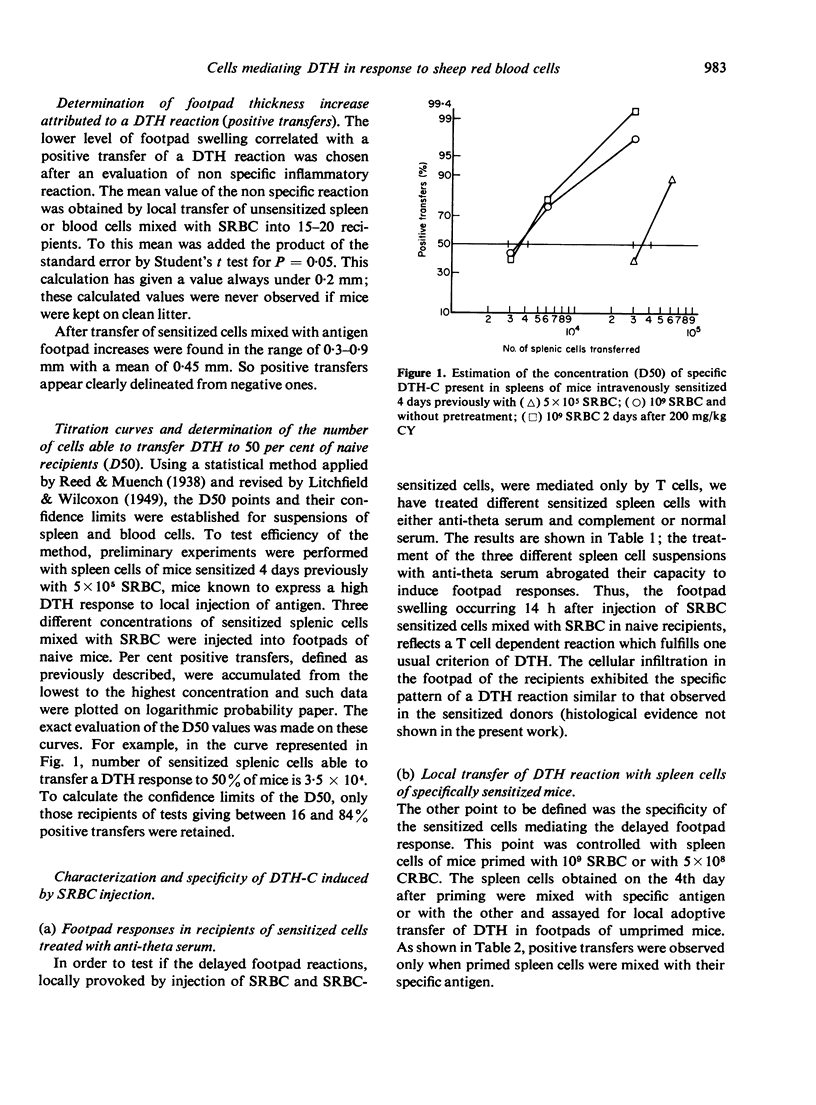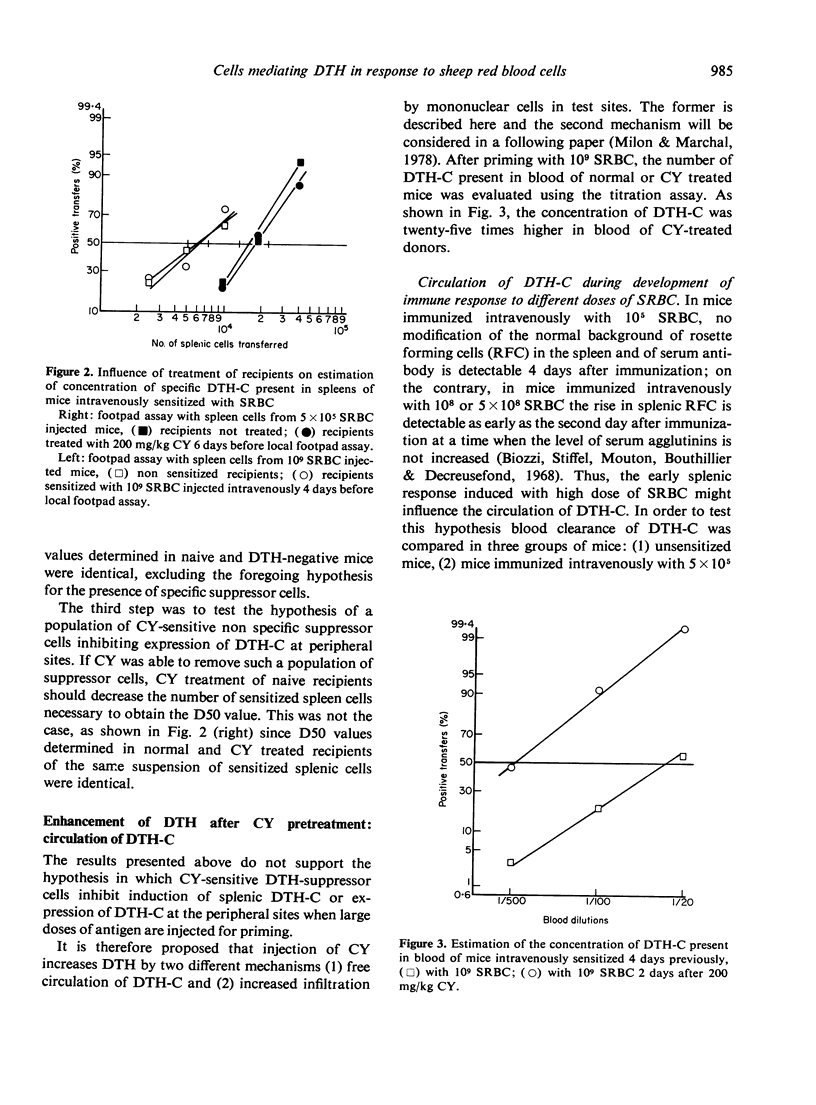Abstract
The delayed-type-hypersensitivity (DTH) reaction observed in mice primed i.v. with low doses of sheep red blood cells is not detectable after priming with large doses. Estimation of the number of DTH mediating cells (DTH-C) was performed by titration (D50 determination) using local adoptive transfer of these cells mixed with antigen into footpads of unprimed mice. In opposition to the absence of peripheral DTH-C, splenic DTH-C were more numberous after large doses than after low doses of antigen. The ability of cyclophosphamide to restore DTH responsiveness in mice primed with large doses appeared to be related to an increased cirulation of DTH-C. These cell circulated only in mice without any detectable B-cell response or in which this response was depressed. Thus a B-cell dependent splenic retention process of DTH-C is discussed as the origin of DTH unresponsiveness observed after priming with large doses of antigen.
Full text
PDF






Selected References
These references are in PubMed. This may not be the complete list of references from this article.
- Askenase P. W., Hayden B. J., Gershon R. K. Augmentation of delayed-type hypersensitivity by doses of cyclophosphamide which do not affect antibody responses. J Exp Med. 1975 Mar 1;141(3):697–702. doi: 10.1084/jem.141.3.697. [DOI] [PMC free article] [PubMed] [Google Scholar]
- Falkoff R., Kettman J. Differential stimulation of precursor cells and carrier-specific thymus-derived cell activity in the in vivo reponse to heterologous erythrocytes in mice. J Immunol. 1972 Jan;108(1):54–58. [PubMed] [Google Scholar]
- Kettman J., Mathews M. C. Radioresistance of cells responsible for delayed hypersensitivity reactions in the mouse. J Immunol. 1975 Aug;115(2):606–608. [PubMed] [Google Scholar]
- Lagrange P. H., Mackaness G. B., Miller T. E. Influence of dose and route of antigen injection on the immunological induction of T cells. J Exp Med. 1974 Mar 1;139(3):528–542. doi: 10.1084/jem.139.3.528. [DOI] [PMC free article] [PubMed] [Google Scholar]
- Lagrange P. H., Mackaness G. B., Miller T. E. Potentiation of T-cell-mediated immunity by selective suppression of antibody formation with cyclophosphamide. J Exp Med. 1974 Jun 1;139(6):1529–1539. doi: 10.1084/jem.139.6.1529. [DOI] [PMC free article] [PubMed] [Google Scholar]
- Milon G., Marchal G. Increased infiltration by monocytes in delayed type hypersensitivity site following cyclophosphamide treatment. Immunology. 1978 Dec;35(6):989–995. [PMC free article] [PubMed] [Google Scholar]
- Mitchell G. F., Chan E. L., Noble M. S., Weissman I. L., Mishell R. I., Herzenberg L. A. Immunological memory in mice. 3. Memory to heterologous erythrocytes in both T cell and B cell populations and requirement for T cells in expression of B cell memory. Evidence using immunoglobulin allotype and mouse alloantigen theta markers with congenic mice. J Exp Med. 1972 Feb 1;135(2):165–184. doi: 10.1084/jem.135.2.165. [DOI] [PMC free article] [PubMed] [Google Scholar]


